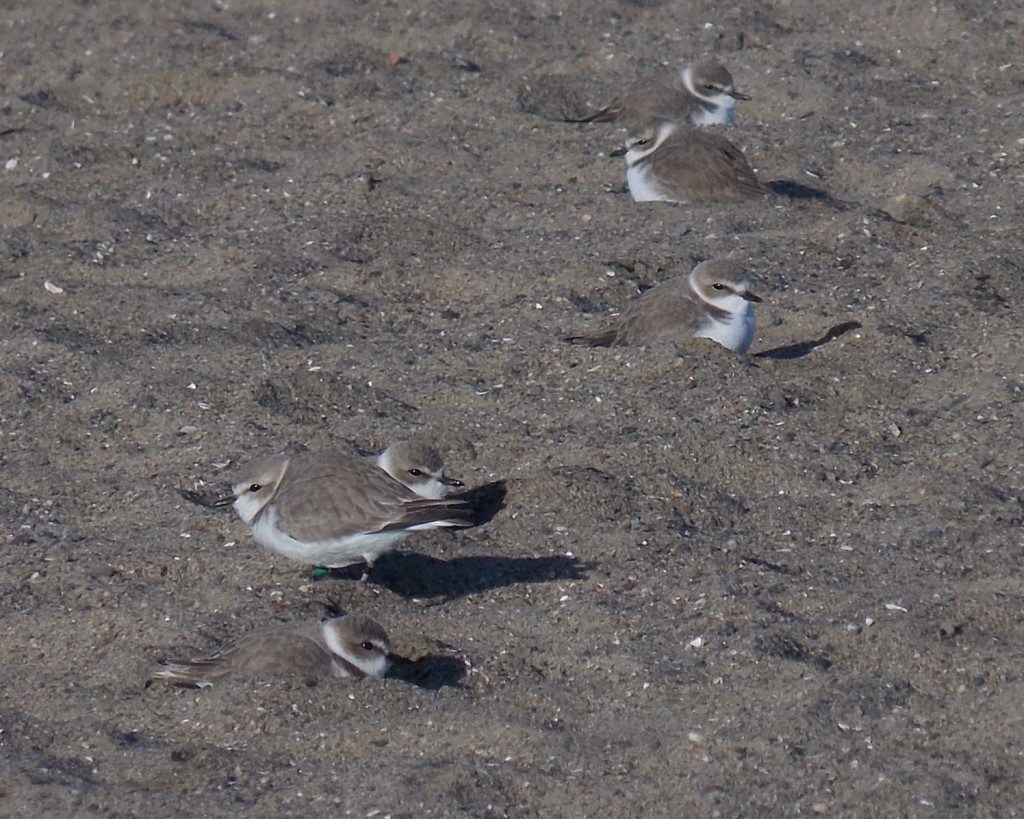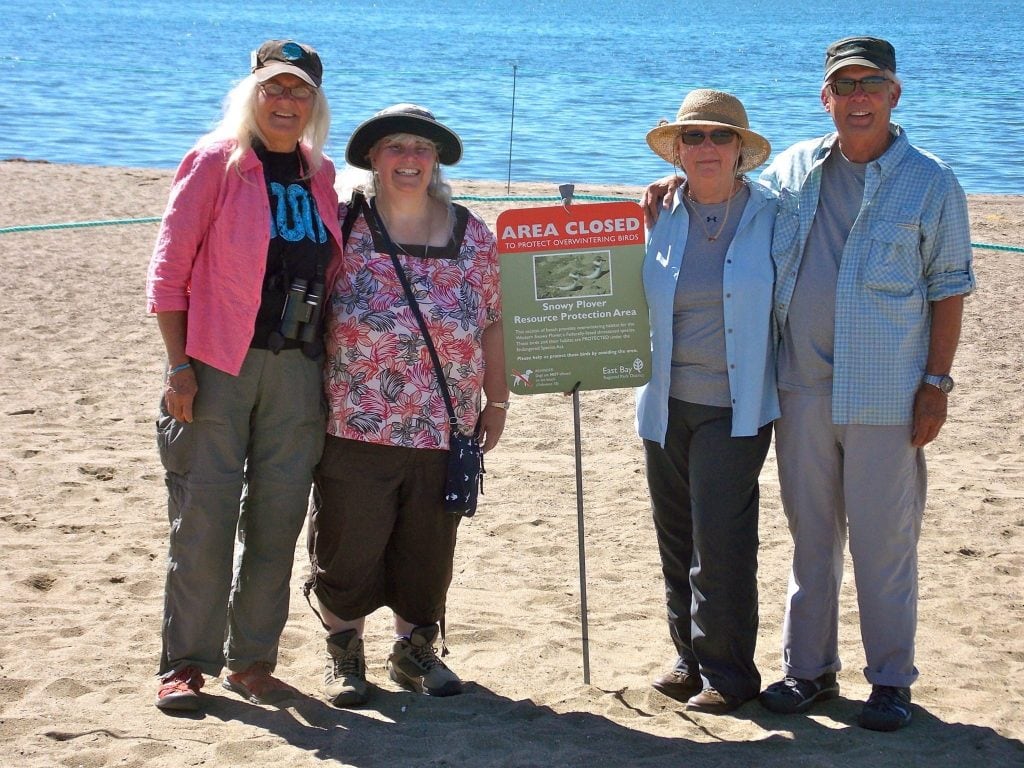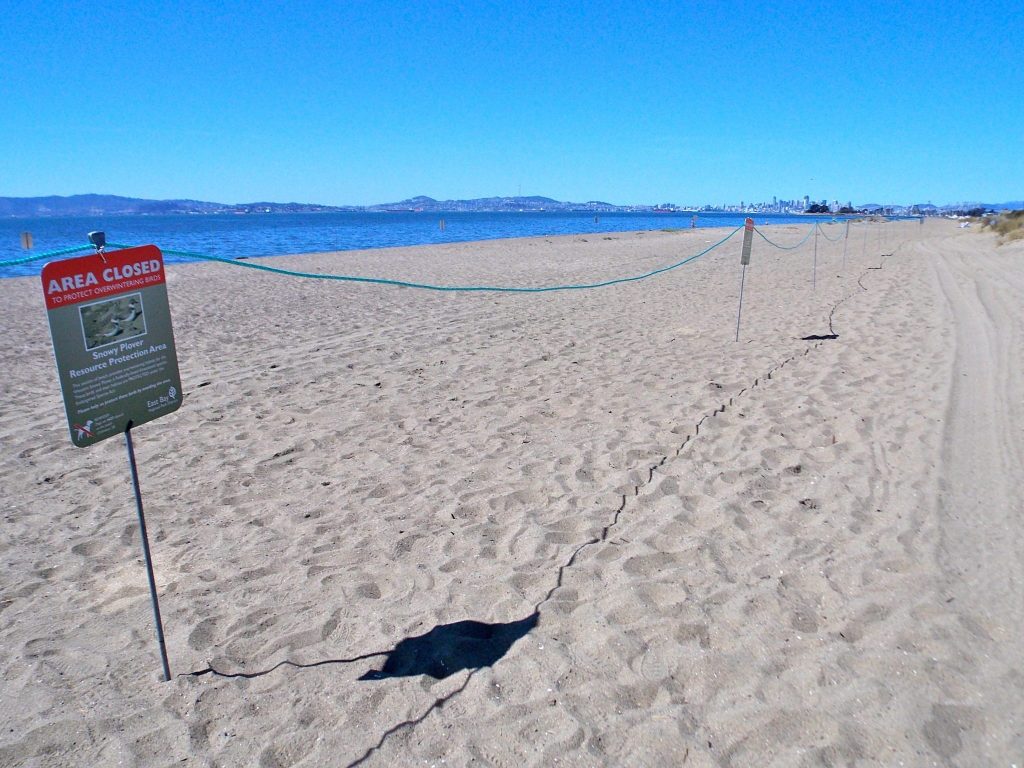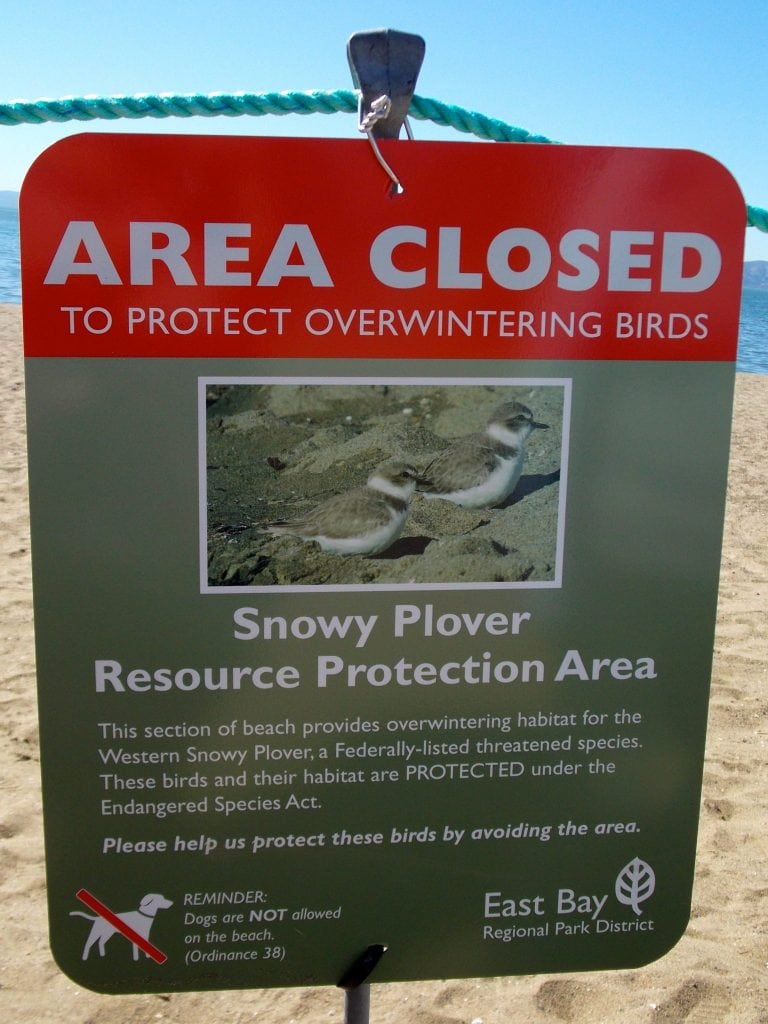Alameda plovers win protective fencing
By Ilana DeBare
Alameda’s winter population of threatened Western Snowy Plovers will be a lot safer this year — thanks to new protective fencing installed after monitoring and advocacy by Golden Gate Bird Alliance members.
The East Bay Regional Park District added the protective fencing and signage this month at Crown Memorial State Beach in Alameda, where up to 14 of the small shorebirds were sighted last winter.
Due to decades of urban development along western beaches and sand dunes, there are only about 2,000 Western Snowy Plovers left on the West Coast. They were listed by the federal government as a threatened species in 1993.
The plovers rely on Crown Beach for winter roosting, as they forage for small invertebrates along the water and rest in the warm dry sand above the tideline. Winter is critical for them to build up the energy and resources for spring and summer breeding. The birds use camouflage for protection so they don’t have to expend metabolic energy by constantly flushing.
But on busy Crown Beach, people often don’t see them until they nearly step on them — sometimes flushing an entire flock.

“With this new protection on their winter roost, these birds will have a better chance to conserve their energy and be in peak condition when it’s time to move on to their nesting sites in the spring,” said GGBA Executive Director Cindy Margulis.
The protective fencing is a classic Audubon conservation success story — built on a combination of citizen-science monitoring, public education, and advocacy.
And while some conservation victories take years to win, this one took less than a year!
The story began in November 2013, when several GGBA members taking part in a Point Blue (formerly PRBO) shorebird survey discovered the roosting plover population.
“We all fell in love with the birds as soon as we found them,” Margulis said. “After a week we all talked again and realized one of us had been out there looking for them every day. We had a de facto survey going on.”
GGBA member Leora Feeney had been documenting the presence of plovers at Crown Beach for years. But the new, larger group of plover advocates made it easier to bring them to the attention of the East Bay Regional Park District, which manages Crown Beach.
GGBA members Sue Morgan, Tom and Diane Bennett, and Margulis visited the beach almost daily to record the plovers’ presence and document incidents of disturbance. They also acted as informal docents, helping passersby spot and understand the birds.


The plover volunteers convinced Park District staff to install some initial educational signs last winter. Then, using their accumulated data, they approached the Park District board and requested protective fencing. GGBA board member Linda Vallee joined them in repeated testimony before the board.
“We kept advising the board, ‘If you don’t take appropriate protective measures as required by the Endangered Species Act, the District could be held liable for the federal crime of ‘take’ of an endangered species,’” Margulis said. “When you have five or six people showing up with data and informed testimony at a series of board meetings, that makes an impression.”
The new seasonal fencing was provided by the U.S. Fish and Wildlife Service. It consists of a set of removable, narrow signposts with a line running through a hole at the top. Installed before the birds arrive in early fall, and removed after they leave in late spring, the visual barrier makes it easy for people to walk around the cordoned-off roosting area.


The newly installed signage asks park visitors to avoid the area, and reminds them that dogs are not allowed on the beach at any time. In 2013, a $5.7 million project added 82,600 cubic yards of sand to restore the beach and dune system to its 1987 footprint.
“While technically referred to as a symbolic fence, this new fencing is far more than a symbolic gesture in its importance to these threatened birds,” Margulis said. “It is a vital tool for helping Snowy Plovers survive – and hopefully prosper. We are delighted to partner with the Park District in providing these threatened birds with a safer winter roost.”
Both Park District staff, interns, and volunteers as well as Golden Gate Bird Alliance volunteers will monitor the Crown Beach plover population this fall and winter.
—————————–
Want to help Golden Gate Bird Alliance protect birds in Alameda? Our Friends of the Alameda Wildlife Reserve (FAWR) committee meets on the third Monday of each month. Details at goldengatebirdalliance.org/volunteer/friends-of-the-alameda-wildlife-refuge/ .
GGBA also works to protect Western Snowy Plovers in San Francisco, where we lead beach cleanup sessions of plover habitat at Crissy Field on the second Monday of each month. See goldengatebirdalliance.org/volunteer/ for details on the San Francisco plover cleanup sessions. Or see goldengatebirdalliance.org/conservation/snowy-plovers/ for general information on Snowy Plover conservation.
